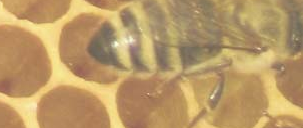
Honey is sold either raw, pasteurized, or somewhere in between. There is no official U.S. federal definition of raw honey, but the National Honey Board defines raw honey as “honey as it exists in the beehive or as obtained by extraction, settling or straining without adding heat.
Raw honey is not subject to any heating. Pasteurized honey is heated to a temperature .
Why is honey pasteurized?
Traditionally, honey is heated and filtered so that it will remain liquid much longer. Honey natuirally contains yeasts that can cause fermentation in honeys that have a moisture content over 18% to 19%. The honey is heated to 160ºF for a short period of time. This also slows granulation by the redissolving sugar crystals in the honey. Pasturized honey is less viscous, which allows it to be ultrafiltered. Raw honey will crystalize also more quickly due to the fact that it is unfiltered.
What's the difference between raw and pasteurized honey?
The National Honey Board conducted a study in 2012, presented at the Federation of American Societies for Experimental Biology (FASEB) Conference in Boston April 20-24, 2013, that analyzed vitamins, minerals and antioxidant levels in raw and processed honey. The study showed that processing significantly reduced the pollen content of the honey (which is already miniscule, by the way), but did it not affect the nutrient content or antioxidant activity. Their researchers concluded that the micronutrient profile of honey is not associated with its pollen content and is not affected by commercial processing.
On the other hand, heating to 160 F can breakdown compounds like enzymes in honey. Many people believe these enzymes contribute to honey's value.
So why not just get pasteurized honey?
True, why not? But, unless you are storing the honey for many months and using it in cooking (where it will be heated amyway). there is no reason to. So if you like it raw, go for it.
References
- National Honey Board FAQs - "A 2012 study by the National Honey Board analyzed vitamins, minerals and antioxidant levels in raw and processed honey. The study showed that processing significantly reduced the pollen content of the honey, but did not affect the nutrient content or antioxidant activity, leading the researchers to conclude that the micronutrient profile of honey is not associated with its pollen content and is not affected by commercial processing. . The 2012 study and abstract with statistical analysis was presented at the Federation of American Societies for Experimental Biology (FASEB) Conference in Boston April 20-24, 2013.